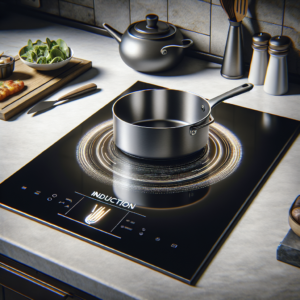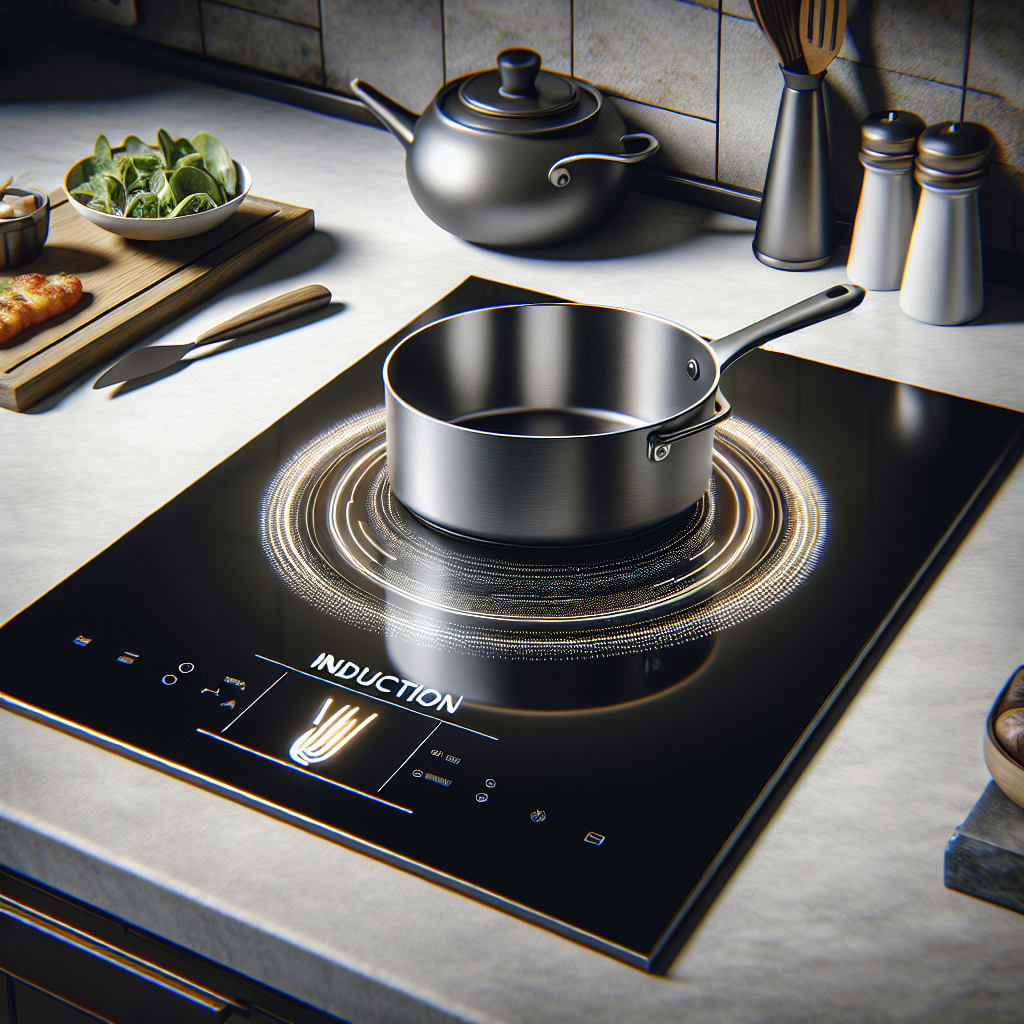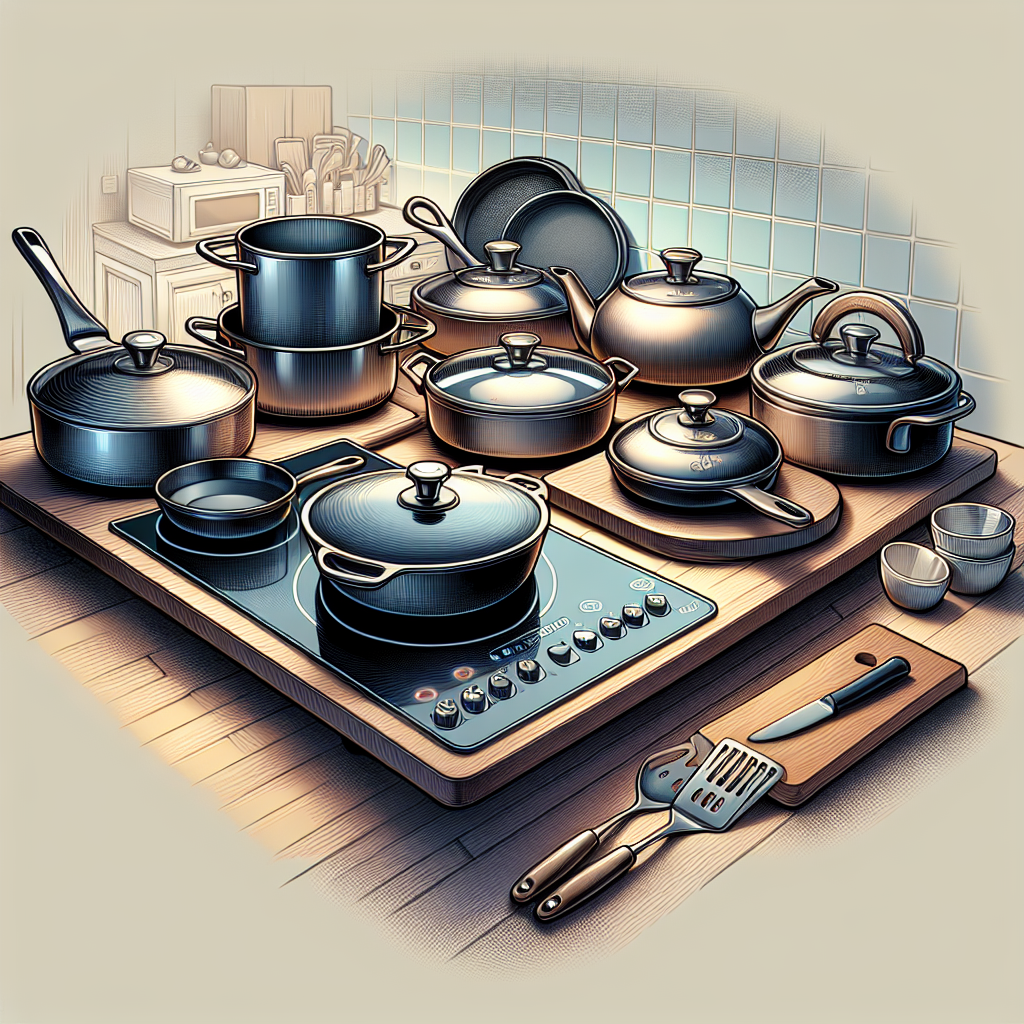How Do I Choose The Right Type Of Cookware For An Induction Cooktop?
November 17, 2023

Are you a cooking enthusiast looking to upgrade your kitchen with an induction cooktop? Well, if you’re wondering how to choose the right type of cookware for your new addition, you’ve come to the right place! With an induction cooktop, it’s essential to have the correct cookware to ensure optimum performance and safety. In this article, we’ll walk you through everything you need to consider when selecting cookware for your induction cooktop, helping you make informed decisions and unleash your culinary skills with ease. So, let’s get started!
Factors to Consider

Cookware Material
The choice of cookware material is crucial when it comes to cooking on an induction cooktop. Some materials are more suitable for induction cooking than others. Let’s explore the different options available:
Stainless Steel
Stainless steel is a popular choice for induction cookware due to its durability and resistance to corrosion. It distributes heat evenly and is compatible with all cooktop zones. However, stainless steel alone is not magnetic, so make sure the bottom of the cookware has a magnetic layer to ensure compatibility with induction cooktops.
Cast Iron
Cast iron cookware is another excellent option for induction cooking. It retains heat well and provides even heat distribution, making it ideal for simmering stews and braising meats. Cast iron is naturally magnetic, so it is compatible with induction cooktops. However, keep in mind that cast iron cookware can be heavy and requires proper maintenance to prevent rusting.
Enamel-on-Steel
Enamel-on-steel cookware combines the durability of steel with a non-reactive enamel coating. It is lightweight, easy to clean, and compatible with induction cooktops. However, the enamel coating may chip over time, so take care when handling and storing this type of cookware.
Carbon Steel
Carbon steel cookware has similar properties to cast iron but is lighter and more responsive to changes in heat. It heats up quickly and evenly, making it suitable for high-heat cooking methods such as stir-frying. Carbon steel is magnetic and compatible with induction cooktops. Remember to season and maintain carbon steel cookware properly to prevent rusting.
Copper
Copper cookware offers exceptional heat conductivity, allowing for precise temperature control. However, copper is not magnetic and requires a stainless steel or aluminum base to be compatible with induction cooktops. Keep in mind that copper cookware requires regular polishing to maintain its luster.
Aluminum
Aluminum cookware is lightweight and heats up quickly. Although aluminum itself is not magnetic, many aluminum cookware options feature a magnetic base for induction compatibility. However, note that cookware with a thin aluminum layer may warp over time, so opt for thicker aluminum bottoms for better durability.
Magnetic Properties
When it comes to induction cooking, the magnetic properties of the cookware are crucial. Only materials that are magnetic or have a magnetic base can be used on induction cooktops. Ferromagnetic materials, such as cast iron and some stainless steels, are naturally magnetic and compatible with induction. Non-ferromagnetic materials like copper and pure aluminum are not magnetic and need a magnetic bottom or a layered construction to work with induction.
Thickness and Weight
The thickness and weight of the cookware play a significant role in its performance on an induction cooktop.

Optimal Thickness
Opting for cookware with a thicker base ensures better heat distribution and less chance of hotspots. Thin cookware may lead to uneven cooking and may not last as long due to warping. Look for cookware with a base thickness of at least 3-5mm for optimal induction cooking results.
Weight Considerations
Consider the weight of the cookware when selecting for your induction cooktop. Heavier cookware tends to distribute heat more evenly and is less likely to move or slide during cooking. However, keep in mind that excessively heavy cookware can be difficult to handle, especially when it’s filled with food.
Cookware Bottom
The bottom of the cookware is an essential factor to consider for induction cooking.
Flat and Smooth Bottom
For optimal heat transfer and efficiency, choose induction cookware with a flat and smooth bottom. A flat bottom ensures direct contact with the induction cooktop, maximizing the transfer of heat. A smooth bottom also prevents scratching or damage to the cooktop surface.
Concave Bottom
Some specialized induction cookware, such as woks, may have a concave bottom to provide the traditional round-bottom shape while remaining compatible with induction cooktops. This design allows the wok to sit securely on the cooktop while still receiving the necessary heat for stir-frying or other wok cooking techniques.
Handle Material and Design
The material and design of the cookware handle are essential considerations for both safety and convenience.
Heat-resistant Material
Opt for cookware handles made from materials that stay cool to the touch during cooking. Heat-resistant materials like silicone, stainless steel, or phenolic resin provide a safe grip and reduce the risk of burns.
Comfortable and Secure Grip
Choose cookware with handles that are comfortable to hold and provide a secure grip. Ergonomic handles with a contoured shape offer improved control and reduce the strain on your hand and wrist.
Removable and Interchangeable Handles
Some cookware sets offer removable and interchangeable handles, allowing you to transform your cookware into oven-safe vessels or save space during storage. This feature adds versatility and convenience to your induction cooking experience.

Size and Shape
Consider the size and shape of the cookware when selecting for an induction cooktop.
Suitable Diameter and Height
Choose cookware sizes that are suitable for your cooking needs and the size of your induction cooktop. Smaller diameter cookware is ideal for heating sauces or small portions, while larger pans are better for searing meats or cooking for a larger group. Ensure the height of the cookware allows for sufficient liquid capacity without the risk of spillage.
Compatible with Cooktop Zones
Induction cooktops often have different cooking zones or burners of varying sizes. Ensure your cookware is compatible with the size of the cooktop zones you frequently use. Using a smaller pan on a larger burner can result in inefficient heat transfer, while using a larger pan on a smaller burner may cause uneven cooking.
Durability and Longevity
Investing in durable and long-lasting cookware is essential for a satisfying and reliable cooking experience.
Quality Construction
Look for well-constructed cookware with solid handles, sturdy lids, and securely riveted parts. Check for a good weight-to-quality ratio, ensuring that the cookware feels substantial without being excessively heavy. Consider cookware with triple-layered or bonded construction for improved durability.
Resistance to Warping and Scratching
Opt for cookware that is resistant to warping and scratching. Thick and heavy-gauge cookware is less likely to warp or deform over time. Additionally, choose cookware with a non-reactive and scratch-resistant surface to maintain its appearance and performance.
Price and Budget
Consider your budget when selecting cookware for an induction cooktop.
Budget-friendly Options
If you have a limited budget, there are still many affordable cookware options available that are suitable for induction cooking. Stainless steel and enamel-on-steel cookware are often more budget-friendly while still offering excellent performance on induction cooktops.
Value for Money
When it comes to cookware, investing in quality often pays off in the long run. While higher-end cookware may come with a higher price tag, it often offers superior durability, performance, and longevity. Consider the value for money and overall cost per use when evaluating different cookware options.
Compatibility with Other Cooktops
If you have multiple cooktops in your kitchen, consider whether the cookware is compatible with both induction and other types of cooktops. Versatile cookware that can be used on various heat sources allows for more flexibility in your cooking options.
Brand Reputation
Lastly, consider the reputation of the cookware brand when making your decision.
Researching Trusted Brands
Research and read reviews about different cookware brands known for their quality and performance on induction cooktops. Established brands with a long-standing reputation often prioritize the needs of home cooks and incorporate the latest technology to enhance your cooking experience.
Customer Reviews and Recommendations
Customer reviews and recommendations can provide valuable insights into the performance and durability of various cookware brands and models. Consider the experiences of other home cooks to help inform your decision.
By considering these factors – cookware material, magnetic properties, thickness and weight, cookware bottom, handle material and design, size and shape, durability and longevity, price and budget, compatibility with other cooktops, and brand reputation – you can confidently choose the right type of cookware for your induction cooktop. Happy cooking!
